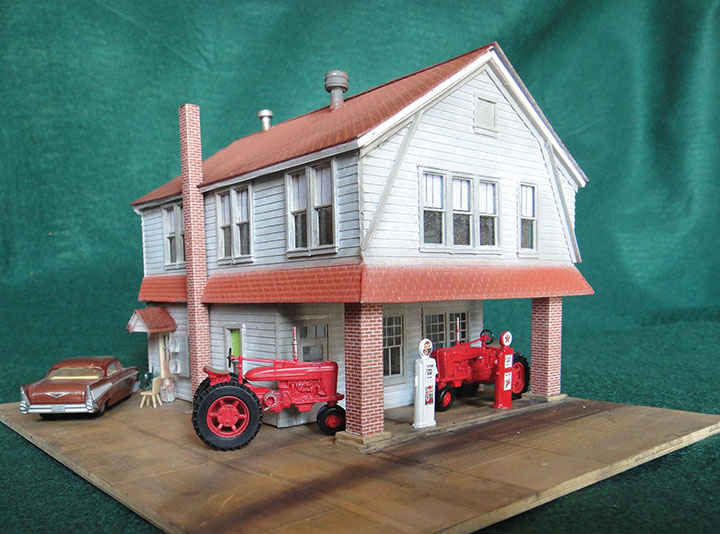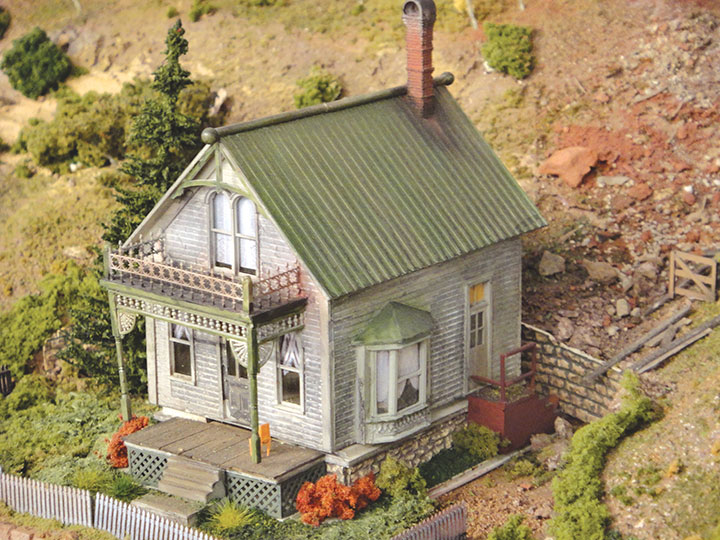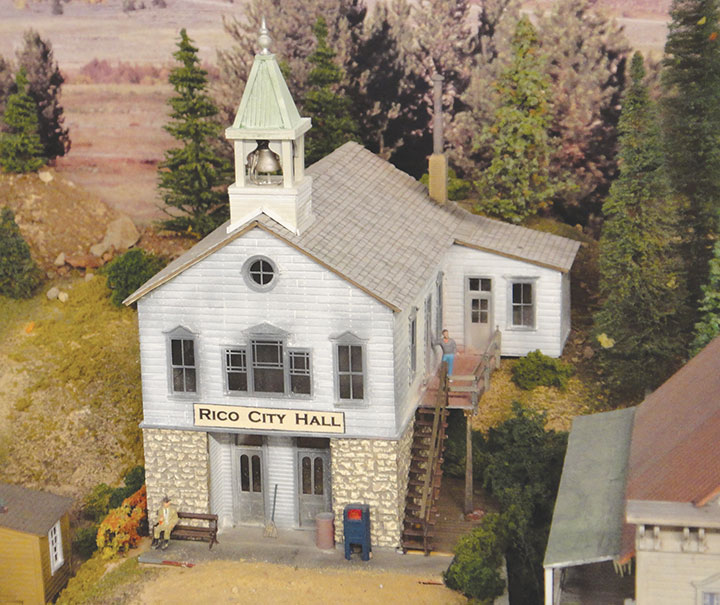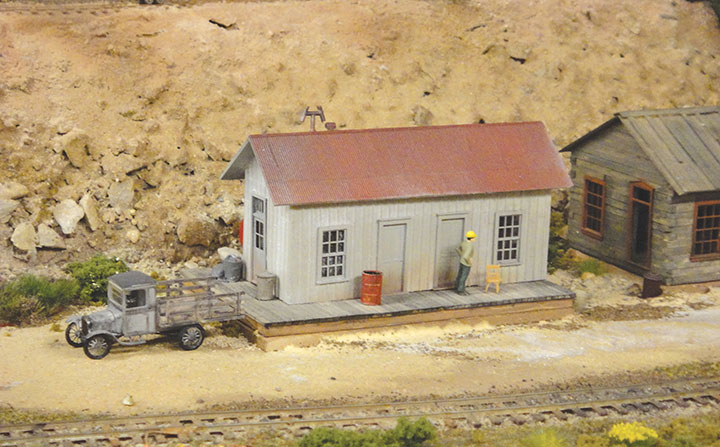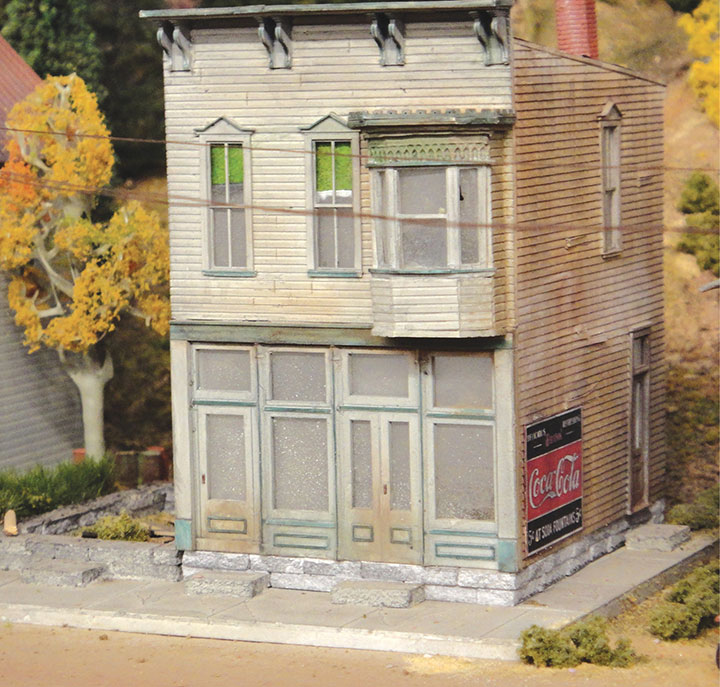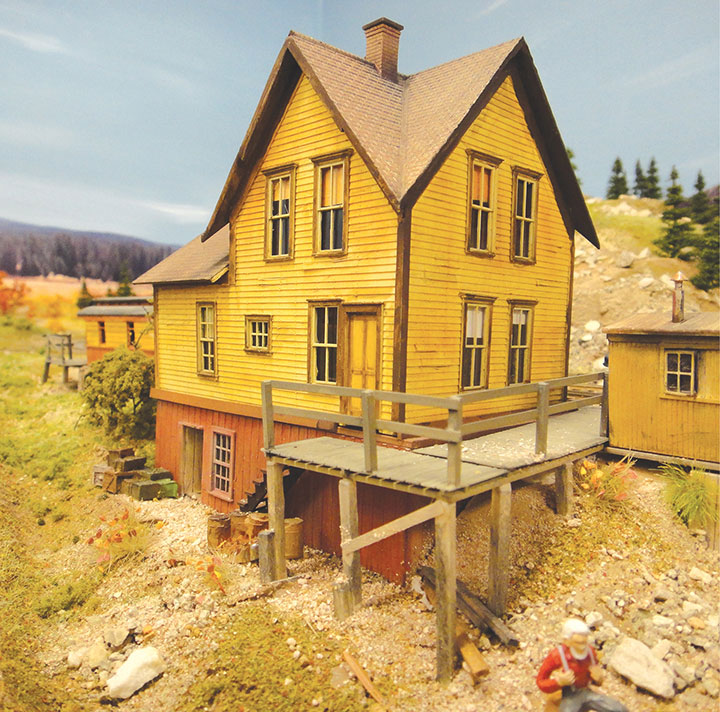OK, the title got your attention, but I bet you can’t imagine what you’re getting into here! I’m the clothshell scenery guy, remember? (see Book Reviews). I build scenery without plaster or anything else that needs to be mixed up or cleaned up or that’s soupy, goopy, drippy, or messy. So, it stands to reason that I might also do painting without paint.
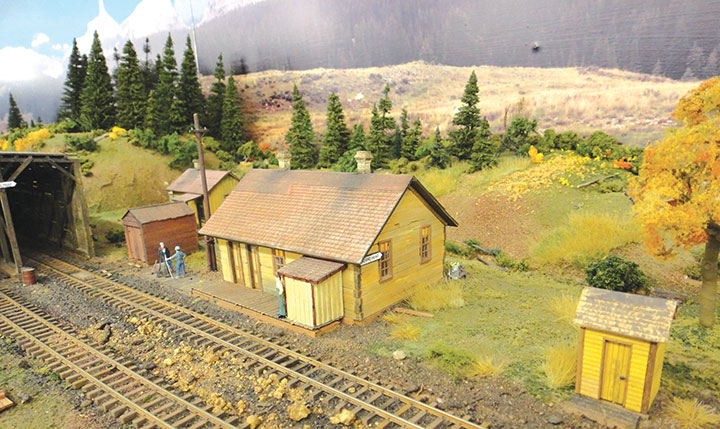
If I don’t use paint for painting, what do I do? Well, I confess that I do one layer of paint. I start by spraying the entire model with a coat of gray. Any gray will do, but the lighter the better and it must be flat. I use Model Master Flat Gull Gray or Camouflage Gray. I suppose gray primer from a hardware store would work too. And that’s it for paint—one coat of gray spray paint and we’re ready to paint without paint.
On top of the sprayed gray base coat, I add all my colors with weathering powders. I use Doc O’Brien’s assortment, and some Bragdon colors, and any number of Pan Pastels. Good old chalk dust isn’t a good choice because most of it disappears when hit with Dullcoat.
Along with the powders, I use my standard weathering solution applied with a brush. Lately I’ve been using Micro-Mark’s Age it Easy Gray. Recently, too, I have bought some of the Vetero aging solutions. Several manufacturers offer weathering solutions and I presume they all yield basically the same results. I have also made essentially the same thing by swishing a few brushfuls of flat black and a brushful of gray into rubbing alcohol. I keep adding more alcohol or more paint until I like the looks of it on a test scrap of wood. It doesn’t matter what kind of alcohol or what percent.
The Process
The good news about trying to remember the sequence of steps in my process is that there aren’t any steps in the process. It’s a matter of feeling your way as you go. I can tell you the alternative steps and what you get with each.
For a freshly-painted new appear-ance, brush on the chosen color of powder right on top of the gray sprayed base surface and work it in, then finally seal it with a spray of Dullcoat or other flat spray finish. This is a possibility, but I never do it. I always do at least some weathering.
For the least amount of weathering, apply the weathering solution to the gray painted surface. Let it dry. Then apply the loose powder, working it in with a small stiff brush. Different colors of powder can be blended on the surface to yield various effects. For example, you might work in some brown powder along the base of walls or around doorknobs, or you might add a trifle of black around a chimney.
For a bit more weathered appearance, apply the dry powders while the weathering solution is still slightly damp upon the model surface.
For the most weathered appearance, apply the colored dry powders on top of the spray-painted gray base surface and then apply the weathering solution on top of that. Too much weathering? Let it dry (or maybe not) and add some more colored powders. You can’t go wrong; just keep playing with it.
Do I always start with gray spray paint? Well no, sometimes I spray the model with the desired color of trim. If the colored powders get on the trim, use a damp Q-Tip for clean-up. Eventually you’ll discover that a tiny damp brush can be ever-so-carefully touched to the dry powder in its container and in effect becomes a bit of paint mixed right in the brush.
In summary, what this article says is: spray the model with light gray paint, apply dry weathering powders and dilute-black liquid weathering solution in any combinations you can imagine. x
